If there is an animal you might see in every state in America, it’s Canada geese. Whether they are swimming in a river, hanging out in a parking lot, or chasing you down a street, Canada geese seem to appear out of thin air. They are noisy, large birds who don’t seem to have a rhyme or reason to their location. Given this, the question has to be asked, what is their deal?
After some brief research on these interesting animals via the Iowa Department of Natural Resources, I found that they actually do reside in every state in America including Alaska and even Hawai’i. They can even travel upwards of 1,500 miles per day, if the weather allows. This may be how they have made it to every state, although, still not exactly clear how they made it to Hawai’i.
Their habitat preference includes rivers, ponds, lakes, grain fields, fresh and saltwater marshes. Canada geese utilize their aquatic habitats throughout their life cycle. During the breeding season, Canada geese can mainly be found near lakeshores or riverbanks, as they often establish nests there due to the availability of water that ensures sources of food. These bodies of water are also great at providing protection from predators.
As the seasons change, Canada geese embark on their migratory flights, utilizing rivers as aerial pathways and lakes as rest stops for replenishing energy reserves. These wondrous birds fly south for the winter in a “V” shape, as most birds do. They form this specific pattern in order to fly faster and more efficiently. While migrating, these geese communicate with honks and switch positions in order for the main goose flying in front to not get too tired.
As many people may know, and have personally experienced, Canada geese can tend to be a bit aggressive to other animals and people. While this usually is during mating and/or baby season when they have their younglings, these geese seem to also be combative during any time of the year. Anyone who owns dogs or walks around rivers and parks where these geese are have most likely had one chase or hiss at them.
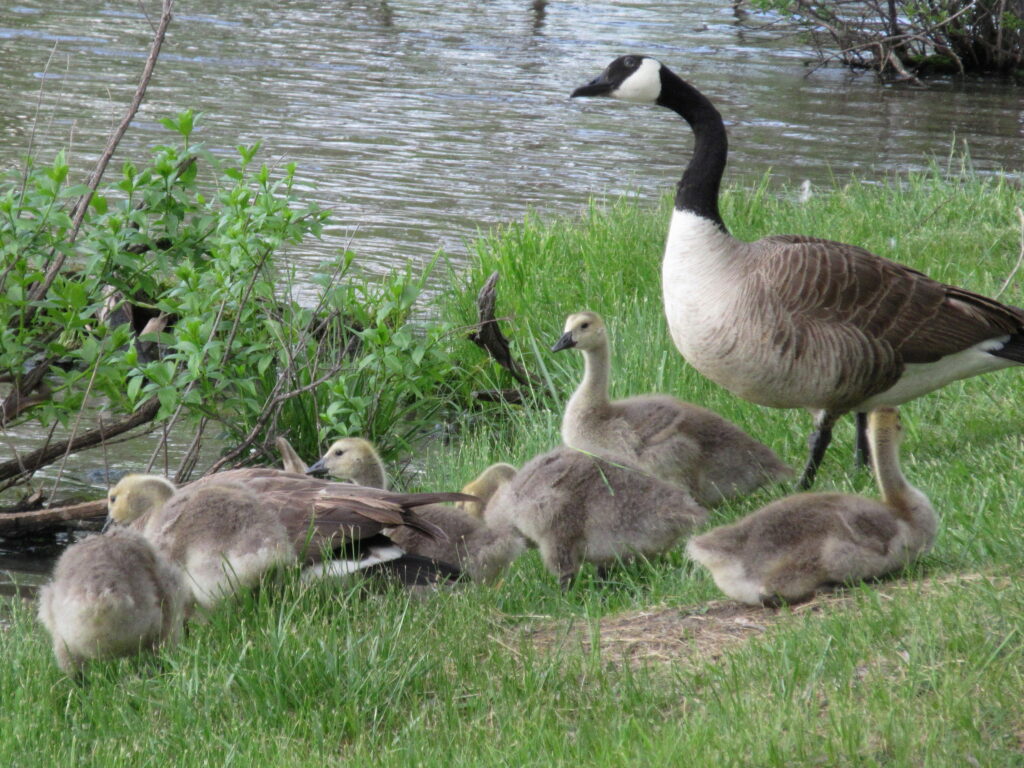
I for one grew up at a pond with a lot of them and have had several encounters of running from these large birds, dragging my dog behind me. One time in particular, I was sitting on a bench with one of my neighborhood friends when a flock near the pond started getting a little ‘too close’. The situation in retrospect was hilarious, although in the moment, my friend and I, being around 12 years old, did not find it so funny. It must’ve been the fact that we had sandwiches with us, or that we were less than 20 yards away, or that the weather was a smidge under perfect, but these geese were relentless. Before we knew it, my friend and I were running down the path back to her house, throwing our sandwiches and anything we could find at the hissing birds. Running from the geese quite literally felt like running from bullies who were trying to steal our lunch. Needless to say, for those next couple of days we mainly stuck to the other side of the pond.
Aside from the lovely ‘nature’ of Canada geese, a more loving fact about them is they actually tend to mate for life. Once a goose finds a partner, they will stay with them usually until one of them passes. I actually found this fact to be very sweet, and I envision (an understatement, I hope) this might give a more heroic factor to the aggressiveness of these geese and why they might be so protective. Going along with being loving, geese are extremely protective of their younglings, and essentially keep them at their side at all times. Parent geese use rivers and lakes to teach their goslings how to swim, as well as how to catch their own food.
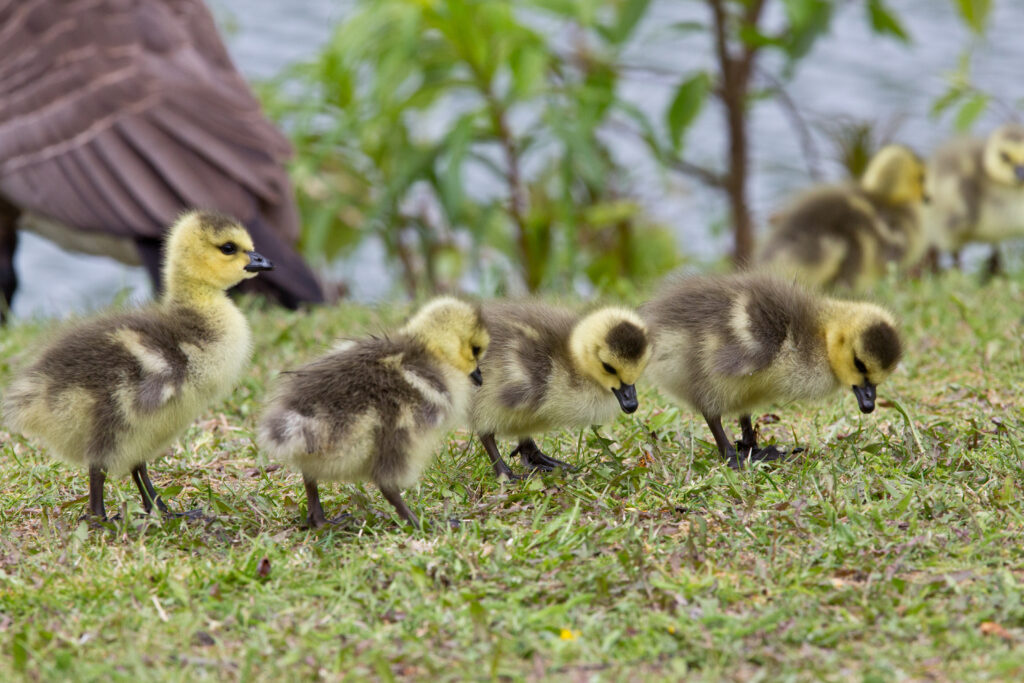
Overall, I would like to say that as interesting as Canada Geese are, I do still adore them and their fearless nature. While birds are normally flight animals, I would consider these geese to be more fight animals, and credit must be given in that area. They also are mainly aggressive in order to protect their young and mates, which is how the majority of animals in the wild behave with mothering instincts. Their migration patterns are fascinating, and their ability to live essentially anywhere is incredible.
The only personal advice that I could give if wanting to know how to coincide with these animals, is to admire their beauty and bravery from afar. These majestic birds are bold and fascinating, making sure that they are heard and respected in all communities, as they should be.
On an early morning in late summer, with already a hint of fall in the air, the inaugural Indigenous Women’s Leadership Network (IWLN) river trip pulled away from the Sand Island launch on the San Juan River in southern Utah, along the border of the Navajo Nation. All river trips hold the promise–and very often manifest a reality–of experiencing something magical. There’s nothing quite like being on the water, sinking into the rhythm of nature’s time, and sharing the river with others. Anyone who’s been on a river trip can attest to this.

This trip held a particularly unique promise: To provide a fully funded opportunity for Indigenous women leaders and other emerging women leaders who work in the Colorado River basin, to experience a tributary of the Colorado River firsthand and to connect with one another. This trip was composed of all women, including the five river guides. Eleven of the 13 participants and one river guide were Indigenous. Four generations and eight different Tribes were represented in the group. It’s hard to overstate how exceptional this is for a river trip, which has historically been and remains a male and white-dominated space. Furthermore, it’s telling that while many of the women on the trip have spent their careers advocating for the waters in the Colorado River basin and for Tribes’ access to them, some have never been on a river trip in the basin themselves. To state the obvious, this needs to change.
This, amongst many other related changes, is IWLN’s vision. IWLN seeks to “create a platform for Indigenous women working on water and natural resource issues in Indian country to mentor and inspire each other, exchange information, build and refine skills in leadership, and to facilitate a succession of Native women in positions of leadership in their community.” Started in 2021, it is a project catalyzed by the Water and Tribes Initiative. IWLN provides a variety of opportunities including professional development trainings, networking events, and–beginning this year–an annual river trip.
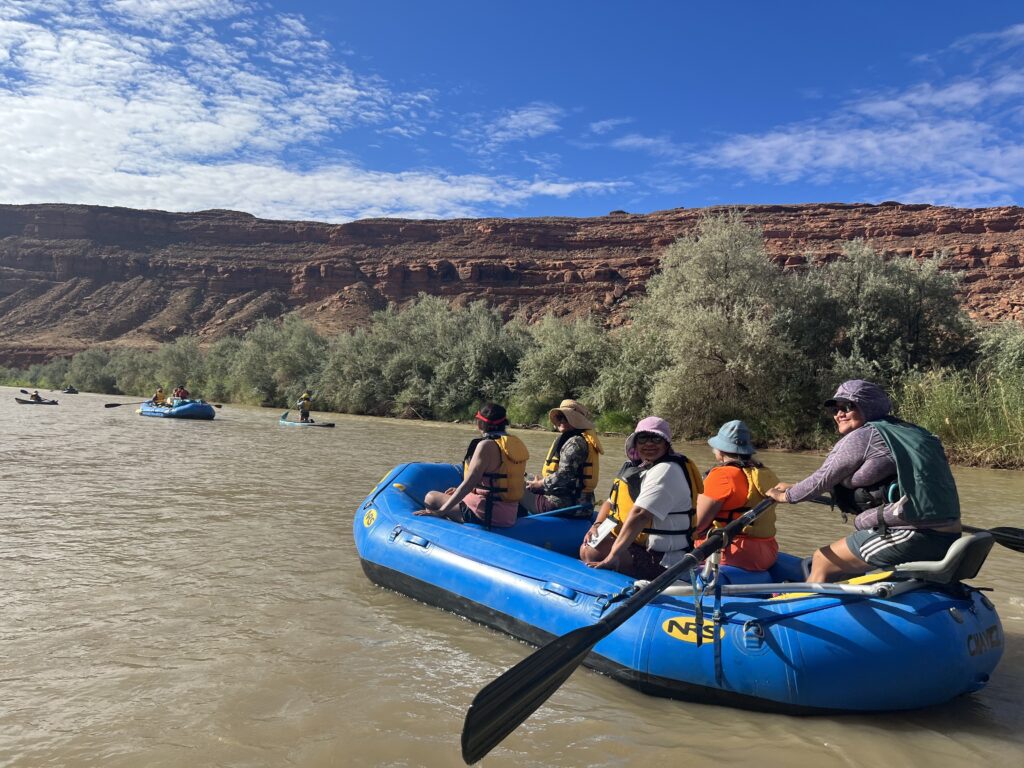
It’s easy to say that this trip was transformative. We spent four days and three nights together, traveling 27 miles along the San Juan and through the ancestral lands of the Hopi, Navajo, Ute, Paiute, Puebloan people, and others. The intentionally intergenerational group was composed of current and previous Tribal Chairwomen, water lawyers, conservationists, and grassroots community leaders. To be able to experience the waters that we work on, largely from afar, in direct ways—to play in it, to pray to it, to listen to it, to witness the other living beings it supports, and to learn new skills in how to interact with it—was incredibly powerful.
While there was discussion of water policy and current issues, the primary goal of the trip was to facilitate this shared experience with the river and to connect with one another. We had nightly group conversations on issues ranging from Tribes and the Colorado River, to mental health, to how to support each other in advocacy work. And, of course, there were shared meals, sing-alongs, and laughter all along the way. Indeed, the promise of experiencing something magical together on the river became reality. And the reality is that this must be the first of many IWLN river trips to come.
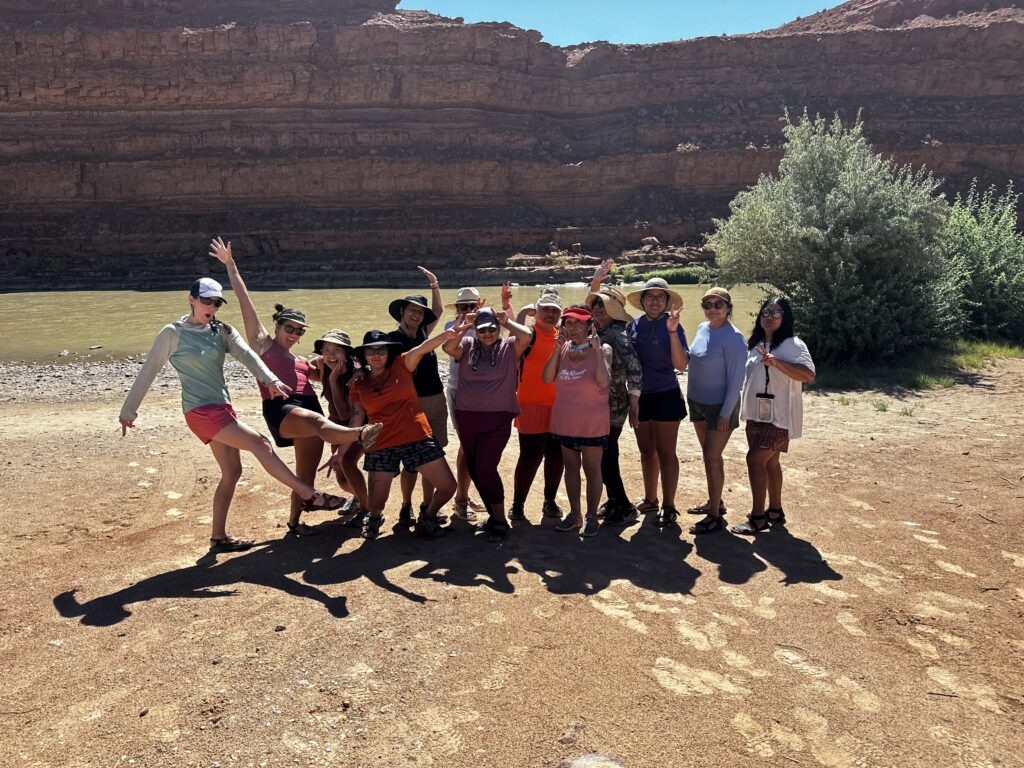
“Spending time on the river surrounded by strong, wise, and caring Indigenous women was pure medicine, and felt so sacred.”
Learn more and get involved in the Indigenous Women’s Leadership Network.
This San Juan river trip was made possible by the support of American Rivers and Planet Women.
The change of seasons means many things for people, plants, and animals. In the Northeast, as autumn daylight shortens the deciduous forest’s spectacular colors emerge. Cooler, wetter autumn weather creates important signals for animals including the American eel, one of 12 migratory species that live in our coastal rivers. We are just beginning to understand the many often subtle environmental cues that influence animal behavior, whether that is temperature, light, pheromones, or noise.
As we enjoy the beauty of fall colors, adult American eels — having lived for up to twenty or thirty years in small headwater streams hundreds of miles from the ocean — will begin a downstream journey that ends in the Sargasso Sea in the Caribbean. These adults from along the Atlantic Coast are joined by others from across the Atlantic Ocean who have come from European Rivers to this same giant gyre of sargassum, a species of algae, commonly called the Sargasso Sea. While no one has yet directly observed the mating of eels, the adults spawn within the hundreds of square miles of sargassum and then die. The offspring, completely transparent and shaped like a willow leaf, catch the Gulf Stream and ride the currents back to either the U.S. or European coast. By the following spring, they begin to swim back up rivers first as “glass” eels and then as bigger juvenile “elvers”. These returning juveniles will swim against the current of spring freshets and often wiggle their way up and over the rocks and ledges that form the natural waterfalls and rapids.
And if you ever thought your commute back home through traffic was tough, think of the eels! It’s an incredible migration — adult eels have been found almost 400 miles from the Atlantic Ocean in the headwaters of the Connecticut River!
But unfortunately for the eels and the other creatures that depend on them, we’ve made that commute both down the river and back up again harder and often hazardous. Dams, particularly hydropower dams, were not designed to allow for the safe, timely, and effective (those are legal standards) passage up and downstream for fish using our rivers. Adult eels can be killed passing through turbines and upstream juveniles cannot get past the vertical faces of dams. And while there have been decades of attention to helping those charismatic fish like salmon, little attention was paid to eels which have been an important food staple for thousands of years.
There is some good news: Today there is widespread effort to ensure that all migratory fish can get to and from their river homes safely, including the American eel. The bad news? Getting known solutions implemented at hydroelectric dams as dam owners seek federal and state licenses as well as green certification is a challenge. Licensing proceedings take years and owners often push back because of costs, all while eel populations plummet. For example, a pending relicensing in the state of Maine for a series of dams owned by Brookfield Renewable Partners illustrated how hydropower dams have harmed American eels. A study required during the relicensing showed that close to 95% of adult eels would be killed passing through the turbines of these projects. This is a good example of the challenges eels and dam owners face in working to meet their legal obligations to public trust resources and safely pass these fish.
Why should we care about a shy and wriggly fish? Migratory fish like the eel are an important part of a functioning ecosystem that has evolved over thousands of years. They are an important food source, they bring marine nutrients not otherwise found in freshwater ecosystems, and all animals and plants have an inherent right to exist.
Want to read more? The Book of Eels (Ecco) by Patrik Svensson is a gentle and captivating narrative on the life history of several eel species and Svensson’s personal connections to these animals.
Want to see more? PBS Nature episode
Looking to really dig deep? Atlantic States Marine Fisheries Commission – American eel
There is an ongoing debate in the Pacific Northwest around whether hydropower as a whole is “good” or “bad”. But this conversation misses important details and nuance.
There are thousands of dams blocking rivers across the Northwest. Many dams provide energy, transportation, flood control, and irrigation. But many are causing more harm than good – and they are falling apart. As a society, we are making choices about the costs and benefits of dams: Which ones can be operated in a more environmentally friendly and economically viable way? And which dams need to be removed?
Dams harm rivers. They can destroy fish and wildlife habitat, degrade water quality, and turn free-flowing rivers into slow moving reservoirs that emit methane, a potent greenhouse gas that causes climate change. Dams in the Pacific Northwest have been a main cause of salmon extinction and a source of painful injustice for the region’s Tribal Nations.
American Rivers has always taken a pragmatic, solutions-oriented approach to dams and hydropower. While we lead the movement to remove outdated dams, we are also a founding member of the Hydropower Reform Coalition, working to improve the operations of dams whose continued operation is important for our energy supply and economy. For the past several years, we’ve also been working with the hydropower industry in the “Uncommon Dialogue on Hydropower, River Restoration, and Public Safety” – finding common ground on plans to retrofit and rehabilitate dams that still serve an important purpose and remove dams that pose a safety risk.
Simply put: American Rivers is ensuring our nation prioritizes healthy rivers, whether that’s by making hydro dams more river- and fish-friendly, maximizing the performance and efficiency of dams, and removing dams whose costs outweigh their benefits.
So, what does this look like in the Pacific Northwest where 50 percent of our annual energy generation comes from hydro? Major dams, including those on the Columbia River, helped build our world-class economy and will continue to support our vibrant region. But we must take a hard look at dams that are causing far more harm than good.
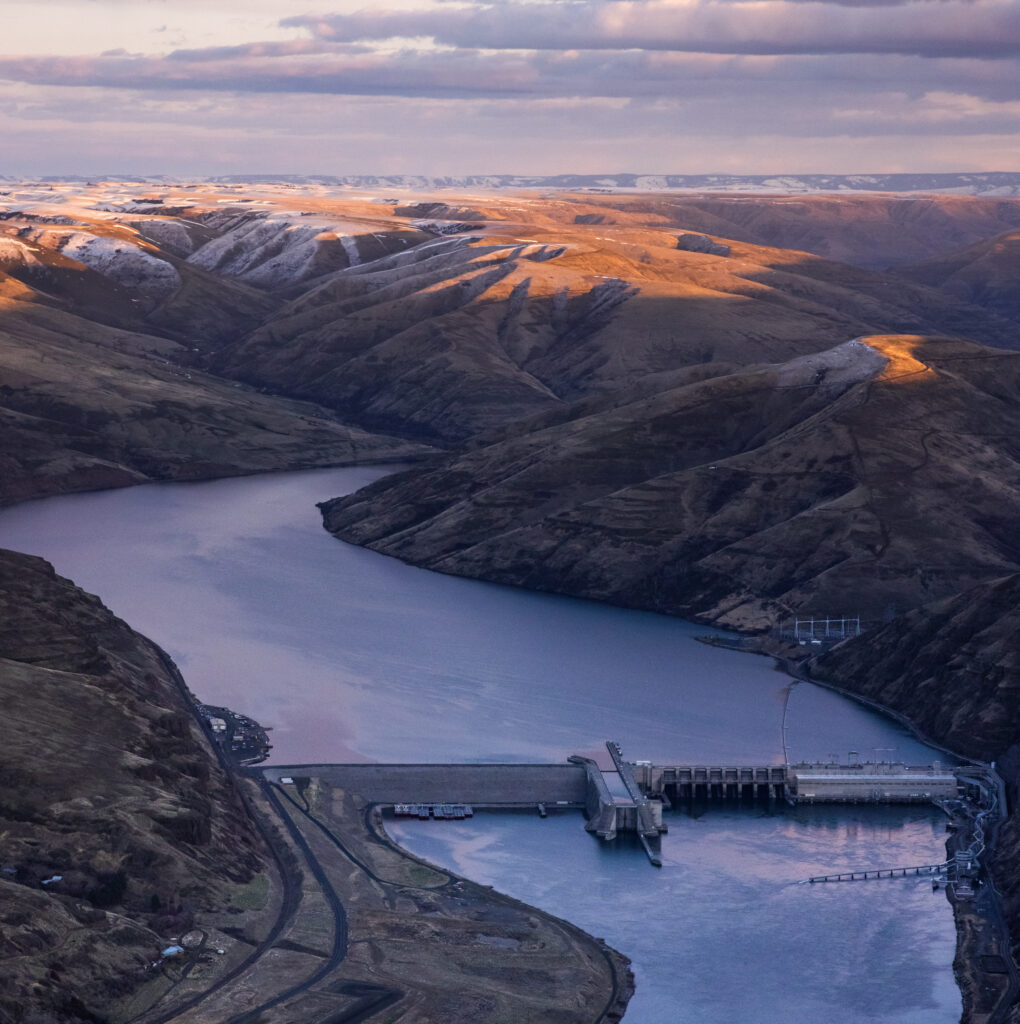
The lower four Snake River dams, which stretch between Tri-Cities, WA and Lewiston, ID, were constructed between 1957 and 1972. These dams provide around 900 average megawatts of power — around 4% of the Northwest’s energy generation. They also provide irrigation for crops grown around the Tri-Cities, as well as transportation for barge traffic between the Tri-Cities and Lewiston. While the services the lower four Snake River dams provide are valuable to surrounding communities, those services can be replaced with alternative technologies. Breaching the earthen portion of the dams is the best solution we have to solve the significant impacts the dams are having on salmon, steelhead, killer whales, Tribal Nations, and economies that rely on these species.
Unlike the mainstem Columbia dams, the lower four Snake River dams are “run of the river” projects that do not provide flood control and store relatively little water in the reservoirs behind each dam. In summer months, those reservoirs bake in the hot sun, raising water temperatures and creating harmful conditions for cold water-dependent salmon and steelhead. In 2015, warm water in the lower Snake was responsible for killing over 95% of the year’s adult sockeye salmon run. Impacts on juvenile salmon are harder to measure, but conservative estimates are that upwards of 50% of juvenile salmon die between Lower Granite Dam on the Snake and Bonneville Dam on the Columbia during their journey to the ocean, and that figure is likely much greater in years when water temperatures rise above 70 degrees.
As we mentioned before, the lower four Snake River dams combined produce an average of around 900 megawatts. Compare that with John Day Dam on the mainstem Columbia 50 miles east of Hood River, which by itself produces around 1,200 average megawatts, and you begin to see why these four dams are the target of so much attention. Four times the negative impacts from dams and their harmful slackwater reservoirs, for less power than John Day Dam alone just doesn’t make sense as we envision a new clean energy future.
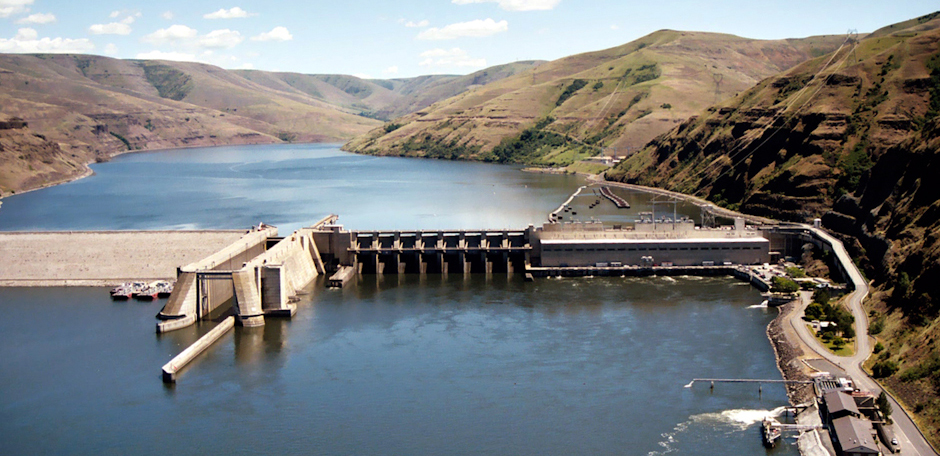
Finally, no form of energy can be considered clean if it leads to the extirpation of as many species as the lower four Snake River dams continue to cause, particularly when you consider the value those species have for Tribal Nations that have lived in the Columbia Basin since time immemorial. The American Fisheries Society, the National Oceanic and Atmospheric Administration, Trout Unlimited, and many other science-based organizations all recognize that breaching the lower four Snake River dams must be the centerpiece action for restoring salmon populations in the Columbia Basin.
Tribal Nations across the Northwest are leading this initiative to breach the lower four Snake River dams because of these negative impacts. The largest impact being to the salmon populations; their dwindling numbers directly impact the culture and traditions of tribal members and their future generations. In addition, with the harm placed on salmon by these dams, treaties made between the U.S. Government and the Tribes are being violated. We have a moral and ethical obligation to uphold our treaty promises and to save Snake Basin salmon and steelhead from extinction.
As we work to develop a bold new clean energy future for the Pacific Northwest, hydropower will continue to be an important part of our generation portfolio. When measured on the whole, it becomes clear that the lower four Snake River dams cannot be a part of that vision. We must build a system that is reliable, resilient, and equitable. We must continue working together to achieve a future of healthy rivers, abundant salmon, and affordable, reliable clean energy.
